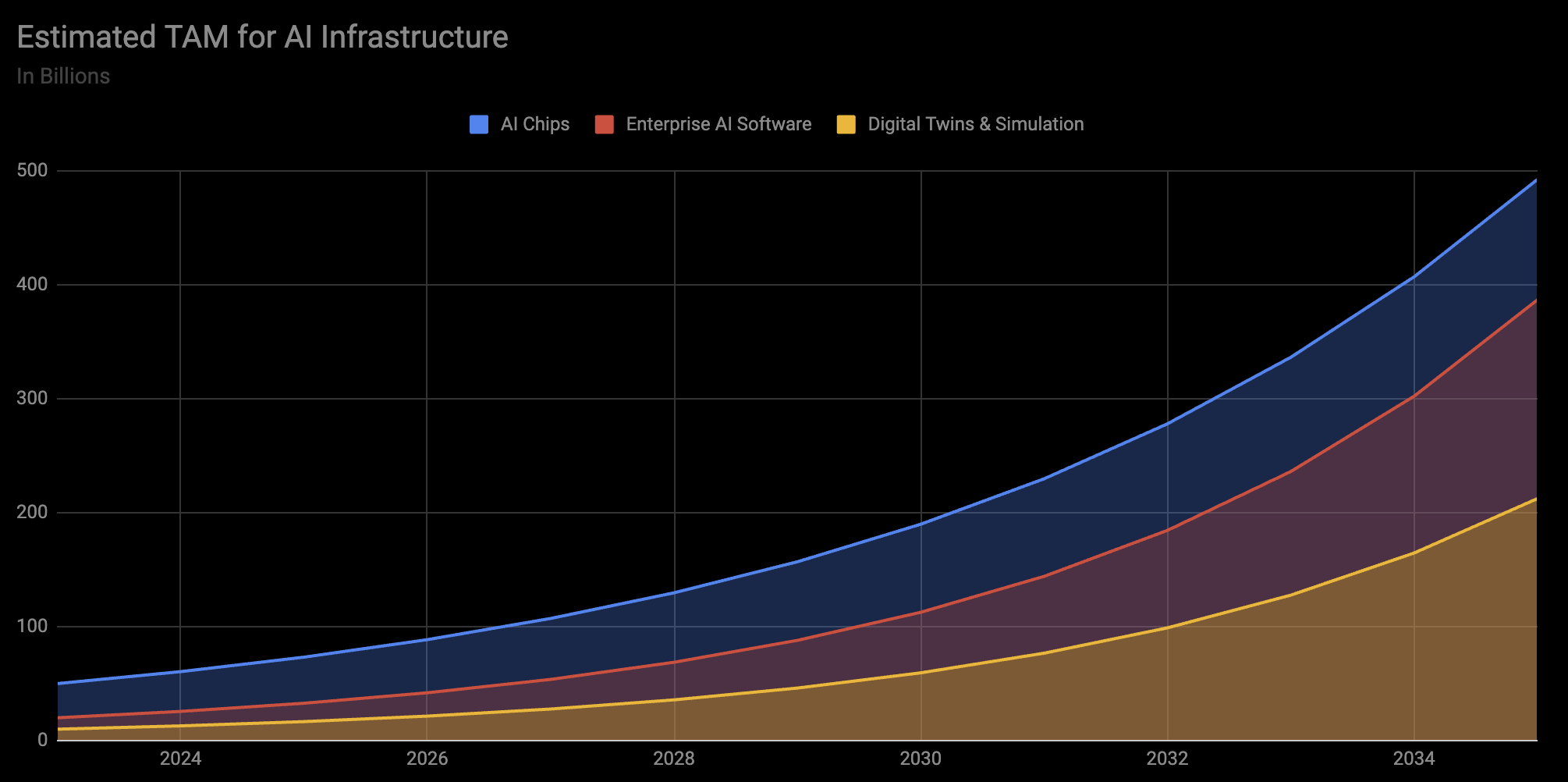Inside GTC 2025: NVIDIA’s Technical Leap and Investment Implications
- Sia Gholami
- /
- Mar 23, 2025

GTC and NVIDIA: The Engine Behind AI Acceleration
The GPU Technology Conference (GTC) is NVIDIA’s flagship event, designed to showcase innovations in accelerated computing, AI infrastructure, and simulation technologies. As NVIDIA has transformed from a GPU vendor into an end-to-end AI platform company, GTC has evolved into a bellwether for both the state of AI and where it’s heading. The company’s influence now spans deep learning frameworks, AI inference engines, interconnect fabrics, and full-stack systems like DGX and Grace-Hopper Superchips. For technical audiences, GTC isn't just about new chips—it's about new compute paradigms.
Technical Highlights and Announcements at GTC 2025
The headline was the launch of Blackwell, NVIDIA’s next-gen GPU architecture, following Hopper. Built on a refined multi-die design, Blackwell incorporates high-bandwidth chiplets interconnected via NVLink-C2C, delivering >2.5x performance per watt over Hopper for large language model (LLM) training. Blackwell also supports FP8 and sparsity-optimized compute cores, making it ideal for trillion-parameter foundation models.
On the systems side, the updated DGX SuperPOD scales up to exascale-class performance with integrated Grace CPUs, InfiniBand NDR400, and support for NVIDIA’s new NIMs (neural inference microservices). NVIDIA also expanded its AI Enterprise stack with tighter integrations into NeMo and TensorRT-LLM, targeting reproducible fine-tuning and low-latency inference across enterprise LLM use cases.
Perhaps most notable: NVIDIA launched a custom silicon service for hyperscalers—offering to co-design AI accelerators using NVIDIA IP blocks (NVLink, Tensor Cores, etc.). This is a strategic response to Google TPUs and Amazon Trainium/Inferentia, signaling NVIDIA’s intent to protect its data center moat.
Investor Sentiment: Technically Bullish, Cautiously Optimistic
Institutional investors interpreted GTC 2025 as a reinforcement of NVIDIA’s role at the center of the AI compute stack. The multi-year roadmap for Blackwell, its extensibility for model parallelism, and NVIDIA’s full-stack vertical integration give it defensibility—even as hyperscalers explore in-house ASICs. Sell-side analysts have begun modeling in revenue acceleration from custom silicon engagements and growth in enterprise AI license revenue.
However, investor enthusiasm is tempered by questions around supply chain capacity (especially HBM3e availability) and pricing sensitivity from cloud providers. The rally post-GTC was positive but modest—reflecting an already-priced-in AI narrative.
Risk Landscape: Competition, Regulation, and Platform Saturation
From a technical risk perspective, several areas warrant scrutiny:
- Competition: AMD’s MI300X and Intel’s Gaudi 3 are showing tangible performance gains, especially in inference throughput and cost efficiency.
- Geopolitics: Export controls on high-end GPUs (e.g., A100/H100 bans to China) remain a headwind. NVIDIA is attempting to address this with region-specific SKUs.
- Platform saturation: As enterprises flood to build AI POCs, questions remain around downstream monetization and real-world deployment.
A Defining Technical Inflection Point
GTC 2025 marked a clear step-function in compute capability. With Blackwell, NVIDIA is targeting not just model scaling but energy efficiency, interconnect innovation, and silicon customization. Technically, NVIDIA’s moat is deeper than ever—but the competitive dynamics and regulatory friction introduce complexity for investors.
For those building or backing infrastructure, the message is clear: NVIDIA remains the architectural foundation for general-purpose AI. But the next phase of AI infrastructure won’t be won with just faster GPUs—it will depend on modularity, power efficiency, and full-stack optimization.
About The Author

Sia Gholami
Sia Gholami is a distinguished expert in the intersection of
artificial intelligence and finance. He holds a bachelor's, master's, and Ph.D. in computer
science, with his doctoral thesis focused on efficient large language models and their
applications—an area crucial to the development of advanced AI systems. Specializing in machine
learning and artificial intelligence, Sia has authored several research papers published in
peer-reviewed venues, establishing his authority in both academic and professional circles.
Sia has created AI models and systems specifically designed to identify opportunities in the
public market, leveraging his expertise to develop cutting-edge financial technologies. His most
recent role was at Amazon, where he worked within Amazon Ads, developing and deploying AI and
machine learning models to production with remarkable success. This experience, combined with
his deep technical knowledge and understanding of financial systems, positions Sia as a leading
figure in AI-driven financial technologies. His extensive background has also led him to found
and lead successful ventures, driving innovation at the convergence of AI and finance.